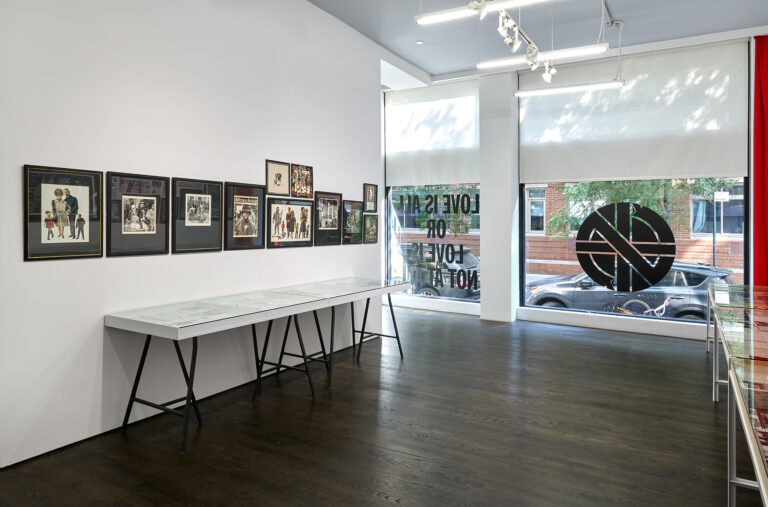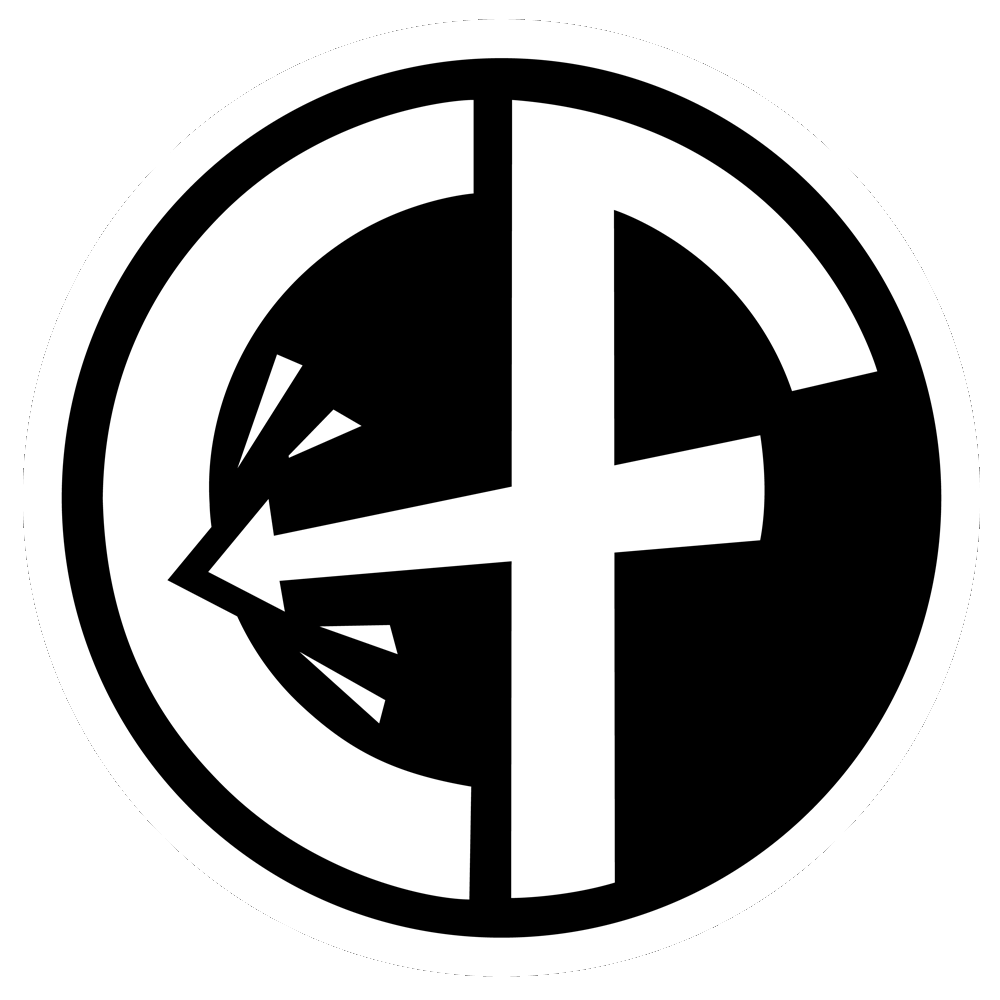
Gee Vaucher Art Show
Contributed by Greg The Builder
There's something weird about walking down a side street in Manhattan and seeing a gallery window filled with a one of your favorite logos of all time. It feels both out of place and exciting at the same time. Truthfully, I am always conflicted when art and academic institutions and "authorities" try to legitimize punk and the art made within it. As if we need their approval to know that what has come from our subculture has meaning and worth. These shows often feel corny and lazy, with the main audience being norms who think "punk is dead".
Gee Voucher's show at White Columns gallery in Chelsea, thankfully, stands out amongst the lackluster crowd. The show is both a launch for the recently published CRASS pictorial history book and a survey of Gee's work after the band's break up.
When you first walk in, you are welcomed by the original "THERE IS NO AUTHORITY BUT YOURSELF" banner, and it was kind of surreal to just be standing in front of something we've seen in photos hanging behind the band for decades. They did a solid job making it because it's still in great shape. The show is split between two rooms. One entirely of CRASS artifacts and the other, larger room, of Gee's more recent work.
I'll talk about Gee's non-CRASS art first just to bury the lead. It spans a range of pieces that could have been in a CRASS insert if they were still a band (honestly, thank g-d they aren't) to large painted portraits. Most overtly political, some a little too on the nose. There were a couple pieces that if by anyone else would have felt like bad political street art. Am I being generous because it's Gee or was she the original Banksy? I don't know, I'm not an art critic or a historian, I'm a CRASS-obsessive idiot.
Gee's painting to me, an untrained eye, feels classically trained and from what I know of her history, that makes sense. The large portraits were cool, but the pieces I enjoyed the most were painted landscapes with less obvious political messaging. A pair of paintings of birds that had fighter jets hidden amongst them and a scene of large breaking waves with a small raft filled presumably with refugees risking their lives for what they hope is a safer life. I regret not taking many photos of this part of the show and not spending more time with it.
Okay back to the reason we're all here. This part was more of an exhibit on CRASS than Gee herself. It also felt more like a collection of artifacts than of art, but is that just what any art exhibit is? I don't really know, again, I'm just an idiot. Obviously a large portion of the collection were Gee's collages, which had several originals framed and hung on the wall, but you can't have an art show on CRASS without it also being a Dave King show, right? Whether it's an art show or a historical exhibit it was really well done. I found myself wishing I owned some of these originals. It physically pained me.
If you already have the new CRASS book you've seen everything in this room, but to be inches away from original graphics, photographs, posters, and other political ephemera the band made puts everything in a different context. Some of the most common live photos of the band are included in the exhibit and I would never have expected them to be such small physical photographs. One of the most intimate feeling pieces in the collection was a version of the logo with the snake "breaking out" of the circle with a note from Dave King wondering if "it's time."
As you first walk in the room straight ahead, centered on the wall is a wild looking poster for two shows CRASS played in Ireland in September '82. You get to see alternative lettering throughout the collection (and book). This is one of my favorites.

Here are some of my other favorite parts of the collection:



The one thing I didn't take a picture of was the original copy of Loving Magazine and the ad for the Our Wedding flexi, one of my favorite moments of CRASS shithousery. What I would do to have an original copy of that ad to go along with the flexi.
Why did this show feel different from other attempts at establishing punk art as "legitimate'? Ultimately, because it was the show of an artist who just happens to be one of the most important artists in punk. It was treated with the respect owed to her and to the band, while neither getting treated as a novelty. No corny wall signage explaining to the unaware what "punk rock" is or reassuring liberals that "anarchy" isn't just a bunch of lawless wildlings sowing chaos. If you had no idea who CRASS was, maybe you'd think it was a collection of cool images and maybe you'd go home and check out the band, but for us, the punks, it really felt like the thing we all shaped our lives around and one of the most important bands (for me at least) in it matters. Or maybe I'm taking this way too seriously, which when it comes to CRASS, I have definitely been known to do.




You can find more photos of the show on White Columns website:



